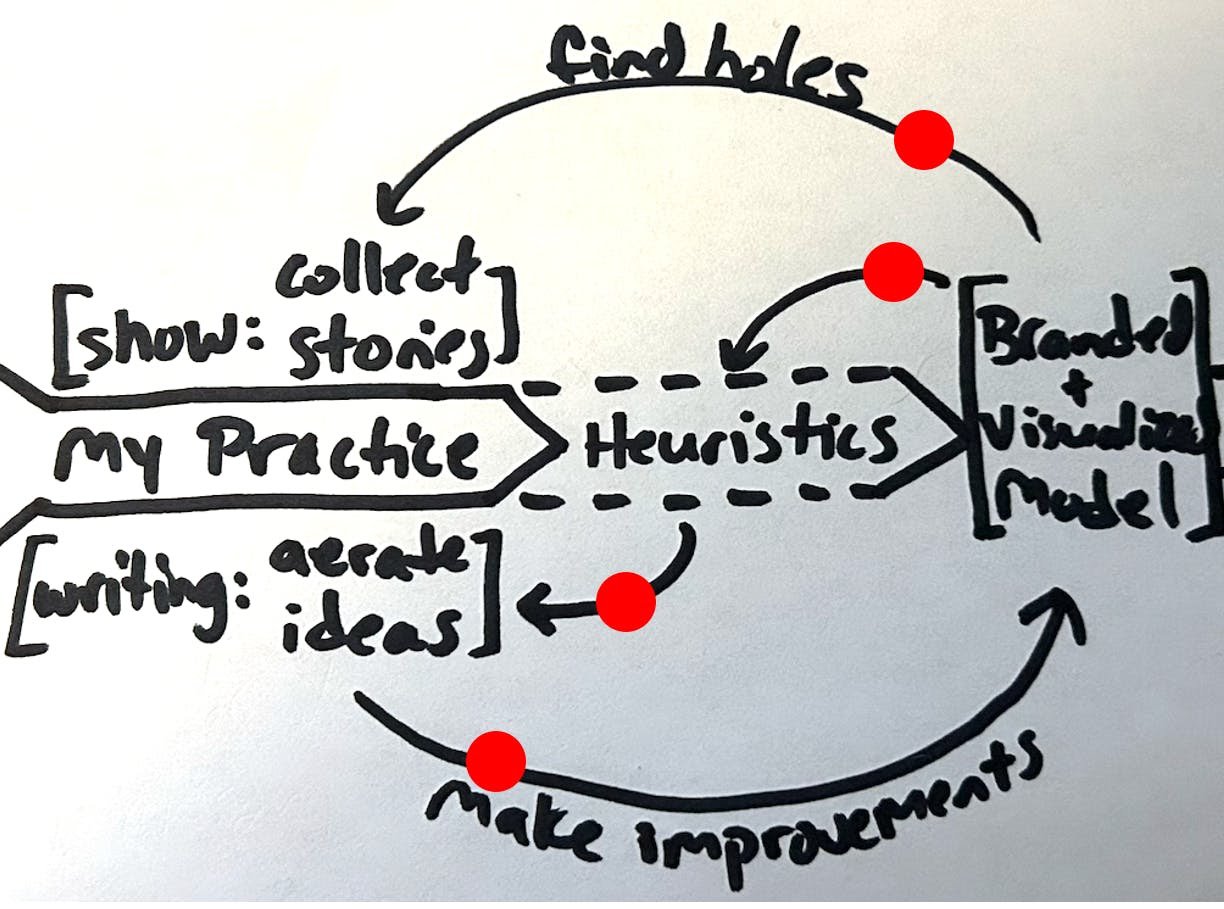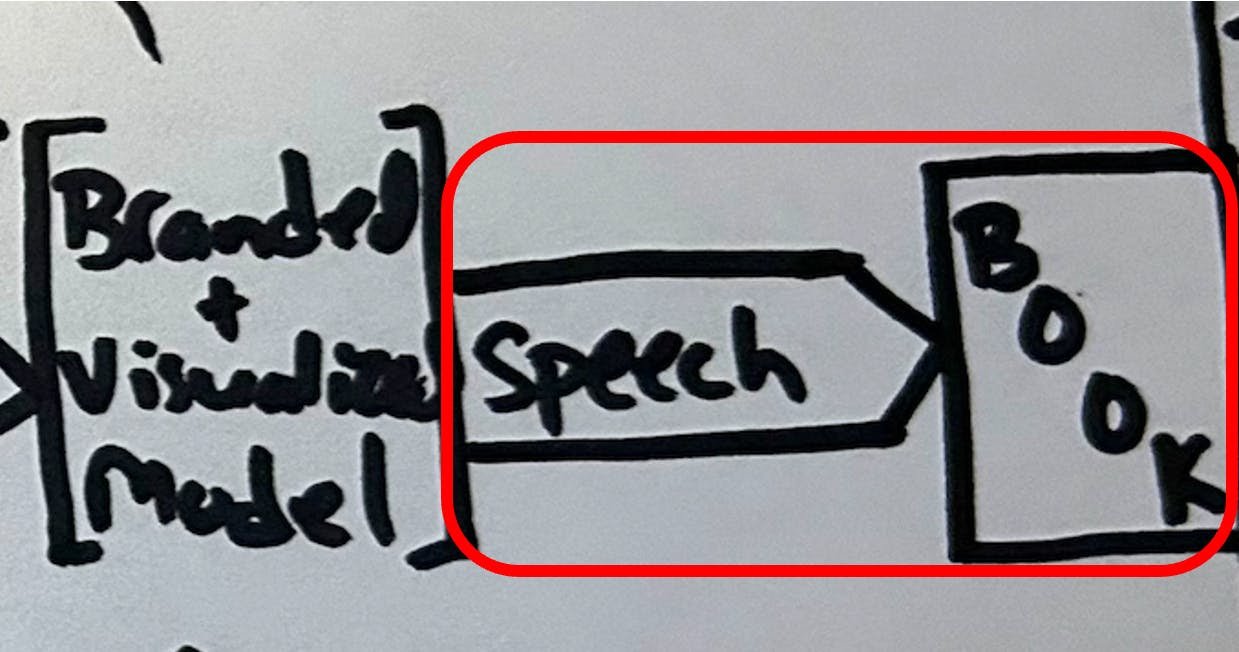How to Create Original Work Consistently
I'm a big believer in self-renewing systems for the tough stuff rather than the tactical stuff. I have systems for crafting original ideas but not for managing, say, an editorial calendar. Likewise, I don't have a ton of automation sequences for this newsletter, nor do I have a recurring checklist for repurposing my content.
If you aren't familiar with that last one, I would like to both congratulate you and also explain it to you briefly. "Repurposing" your content is this thing marketers can't shut up about lately, which is a simple tactic masquerading as a groundbreaking strategy where you create one big asset like an episode or essay, then you turn into a million smaller pieces, then you absolutely yeet them at people's faces as aggressively as digitally possible.
(Look, it's not a bad idea, it's just that the obsession with repurposing has gotten out of hand. Can we agree? It's kinda like the time in college when me and four buddies had tickets to a bar in Times Square on New Year's Eve, but we kept getting lost wandering around all these blocked-off streets and all the while, one friend just kept shouting to us, "Guys, we just need to loop around. Let's loop around! Guys, loop around!" until another friend shouted, "IT'S THE PANACEA!" and we all died from laughing/exhaustion/fear of getting stuck in the human sardine tin that is Times Square on New Year's Eve.)
Repurposing: it's the magic solution.
It's the cure-all for content.
It's the F***in' Panacea Wine Mixer.
(And if you understood that reference, we just became best friends.)
(I know. I'm proud of me for the second reference too.)
Without further ado (and good Lord, do I love me some ado), here is my process for sustaining original ideas:
1. It starts with my intake. My frustrations with the status quo of the industry and how things are done and what's getting popular or trendy. My observations of how others are behaving in our space, but also my daily encountering of random things out in the world that have nothing to do with work but could make for good metaphors and stories later. Last but not least, the third part of my intake my curiosity of why things are the way they are, what realization daily observations popped into my head, and how or why creative people made choices in projects I admire.
2. Then I rely on my practice.
Your practice is a personal project that recurs. It's for you and you alone, and simply showing up time and time again is the lone objective. Then comes exploration. Then comes improvement. Then comes mastery.
So I write and speak about my frustrations, observations, and curiosity.
My show is used for collecting stories related the questions or frustrations on my mind. Who do I admire? Who can I ask deeper questions to? Who can illuminate something to us? Who has a good story to tell?
My writing is for aerating my ideas. I put them out there, trying to make sense of something. I write and think, think and write, then step back and read what I wrote, and that builds into future things. Also YOU give me feedback sometimes too. (Thanks for that.) The entire process is kind of like me saying to myself and to you, "Is this anything?"
3. Then, various heuristics start to flow out of and into the work.
By writing and thinking, thinking and writing, I just kind of trip into (then consciously develop) various kinds of heuristics. For instance, as I explored the idea of resonance, I wrote-thought and thought-wrote a whole bunch and somehow this phrase slipped out: "Don't be the best. Be their favorite." I remember thinking, "Oh, that might be a thing!" And then some people replied to my newsletter to basically confirm, "Oh, that's a thing." And I used it more. And people started saying it back to me in comments. And then people started to remix it and cite me ("Don't build the best product. Build their favorite product.") Today, the phrase is at the top of my home page and drives so much of my platform, and it's all from aerating my ideas in writing first.
Other heuristics might not be punchy lines but visuals or alliterations, like the Audience Resonance Pyramid or the XY Premise Pitch (same link as the Pyramid) or the 3 Ps of creative mastery.
4. From there, I craft what some authors and consultants call a "contextual model."
(That says "Branded + Visualized Model" on the right. Allegedly.)
This step is where I'm at now. The model I'm working on right now sums up the big change I'm pushing for in the world and for others, and it conveys a lot of information, quickly and visually. It also makes a complex idea simple to grasp -- and much more memorable.
UPDATE: Here is the model!
A model can be a 2x2 grid, a Venn diagram, a flowchart, a pyramid, a series of loops, an acronym... you name it.
To build a model, I rely on my mastermind cofounder Melanie Deziel's model for crafting models (how meta!). She calls it IRON: Information, Relation, Operation, Name.
Information = the various things you're trying to convey in the model (e.g. the value of our ideas + their originality)
Relation = how these various things relate to each other (what is the relationship between being valuable and being original?)
Operation = how people operate the model (e.g. move UP the value chain, and move OVER the originality spectrum, then connect where you land to each other, and that's how you plot where you are as a storyteller right now or where you want to go in your work)
Name comes last. Because of course it should. Because everything evolves into something new compared to the initial idea.
5. This model then becomes the focus of my practice.
Just as I did before with my practice, I'm essentially saying to myself and to you, "Is this anything?" But now, instead of a general explorer, I become a focused investigator. For a time, the model is what informs my show and my writing.
On my show, I continue collecting stories, only this time I hold them up to the model to find holes in it. I'm NOT trying to lead the guest into saying something that confirms my model is correct. I'm just trying to use stories I've told or will tell to pressure test the model and make sure it's genuinely useful when I hand it to you.
In my writing, I start to speak directly TO the model. That means before I'm ready, I share it with you directly. (That's next time!) This begins a feedback loop that strengthens the model, and careful readers will be able to draw a direct line from that first post revealing the model to future posts, including a familiar set of terminology that keeps everything coherent.
The model itself also leads me to uncovering or creating new heuristics, which themselves get aerated by including them in my writing (the smaller arrows in the visual above).
6. Finally, after months or even years of this, I develop the speech and the book.
Once I craft the talk, I'm very close to writing at least the outline for the book. The two go hand-in-hand, because the speech follows a similar structure to the book, just in denser form.
(For Content Marketing World in late September, I'm developing the Playing Favorites talk -- with the Idea Impact Matrix inside. So, yes, I am seriously thinking about the next book as of now.)
This process is how I landed on my first book, Break the Wheel, and it's also what led to my last book (a mid-pandemic ebook I furiously crafted while working halftime, meaning my tone of voice and visuals in the book are truly wild; it's called The Creator's Compass). You can find both here.
To me, books are capstone projects. They come last, after lots of exploration and investigation. Some readers have been with me on the journey. They'll get that satisfying final reward and enjoy seeing how I've evolved my thinking and my stories, tweaking them to fit the book and the latest iteration of my ideas. New readers will encounter the Best Of -- the things the journey revealed and helped me refine. Then, some of them will go back and binge their origins (though they'd never call it that).
7. BUT WAIT...
What I realized after writing both books was just how virtuous the cycle can be. After releasing something big like a book, I give lots of related interviews and talks, and of course I'm still writing my newsletter and my show. This means I'm continuing to press forward. I keep writing and talking ... and thinking. This leads to new feelings of frustrations, new observations, and new moments of curiosity.
So we begin again.
"Does it work?" you might be asking.
"Sure," I'd tell you, smirking to the side. "60% of the time, it works every time."
And if you're thinking, "That doesn't make sense," then congratulations. You just remembered we do creative work.
Turns out the only truly reliable system is loving the hell out of that.
PS: Why am I thinking about branded and visualized ideas so much these days?
Infinite noise. Generic junk. AI fatigue before the race even begins?
Members of our mastermind the Creator Kitchen just wrapped up a shared focus sprint. Mel gave us a masterclass on her IRON method, author and speaker Andrew Davis took us inside his long history of developing powerful, original models, and we all developed our own visual frameworks to drive our businesses and build our audiences.
The Idea Impact Matrix you will soon see is a direct result of the work Mel and I did on OUR model alongside members, since we do the same work as them (the difference being, we shoot videos about our process to take you behind-the-scenes as a member).
The Creator Kitchen is a mastermind where content creators focus on crafting high-value, original work. We support each other through live and asynchronous connection, and we benefit from exclusive masterclasses, guests, and access to my and Mel's processes and calendars.
Join us and create things that stand out and resonate deeper.







